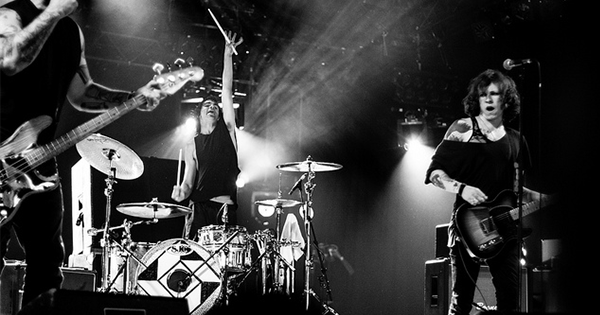
I used to wonder what kind of woman I’d be. Whenever I look around the trans community, I see battered warriors—courageous folks for sure, but no one I’d want to emulate. The transvestites and transsexuals I got to know in the 1980s were some of the most traumatized people I’d ever seen. And today, even with the progress we’ve made (the president actually mentioning us in this year’s State of the Union), I see all kinds of behavioral masks and gimmicks that turn me off.
Chief among them is hyperfemininity, strategies of presentation and comportment that come off as cartoonish, despite being attempts to blend. (I’ve heard similar things said about hypermasculinity among trans men.) Trans folks are all too aware of the conditions surrounding us—rates of unemployment, HIV, violent attack, and suicide that are through the roof—which is doubtlessly connected to behavior: in order to survive, we will cling to dominant stereotypes and bury our authenticity. I also see hyperfemininity in some of the most successful among us, the trans Brahmans the media corporations have served up as role models, who are not my role models.
Around the time I was coming out, a friend told me about positive deviance, an ingenious approach to community-wide problems. Instead of outside agencies bringing in aid and education, positive deviance looks for individuals within a community who have already devised solutions for themselves, and then finds out what they are doing. “There were always some healthy children among the poorest families,” said Monique Sternin, a founder of the Positive Deviance Initiative who helped remedy widespread childhood malnutrition in Vietnam in the 1990s. While other children were living on salted rice water, the positively deviant children were being fed nutritious food—tiny crabs and yam greens—that was plentiful, yet considered taboo.
I’ve been looking for positive deviance in my community. When I was growing up, David Bowie was an example of someone who’d figured something out about gender nonconformity. He was wild, but he was also calm and sane, and thriving as an artist. When interviewers asked about his sexuality—was he gay? bisexual?—they were missing what was obvious to his fans: Bowie was freeing up gender. Like Major Tom in his song “Space Oddity,” he was out of range of ground control, headed toward his own planet.
Right now, two other trans musicians seem to me to have positive deviance: Laura Jane Grace, who transitioned a few years ago and fronts the punk band Against Me, and Justin Vivian Bond, a consummate New York City cabaret singer. Bond lives and performs as a womanly person, but refuses all categories except “trans,” telling one interviewer that information about her body is between her, “whoever I make love to, and my doctor.” Grace embodies a sort of tomboy punk that is without precedent or affect, and she hasn’t altered her booming singing voice. “I doubt you’re gonna find a successful social movement that doesn’t have a soundtrack,” she has said, and her “True Trans Soul Rebel” may become our anthem. Both have figured out how to live authentically and on their own terms, and they make the question I used to ask—“What kind of woman will I be?”—seem naïve. I’ll be me.
At the Positive Deviance Initiative, once they identify who is thriving, they get them to teach the others. Justin Vivian Bond, Laura Jane Grace: would you care to have coffee with me?

